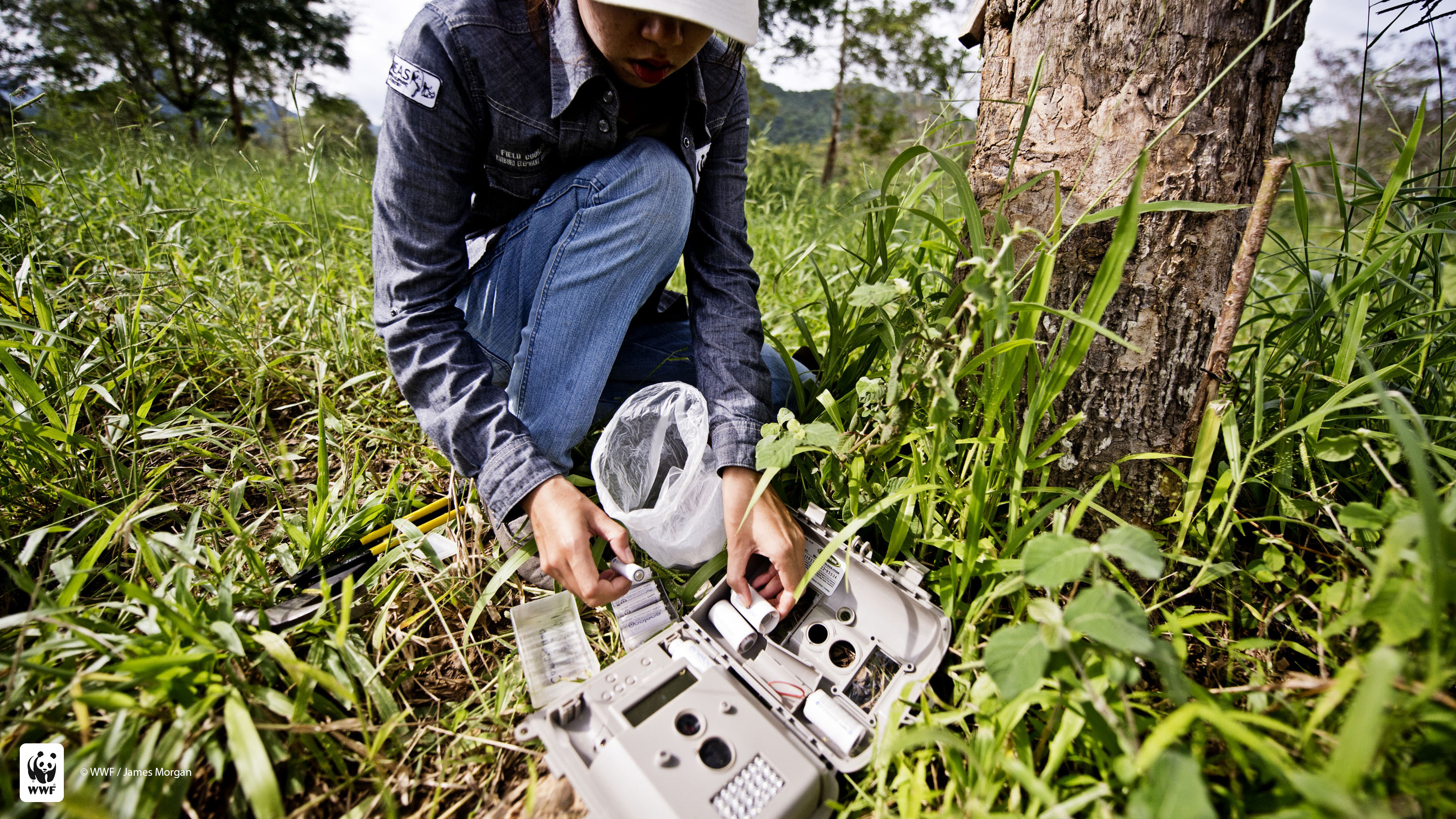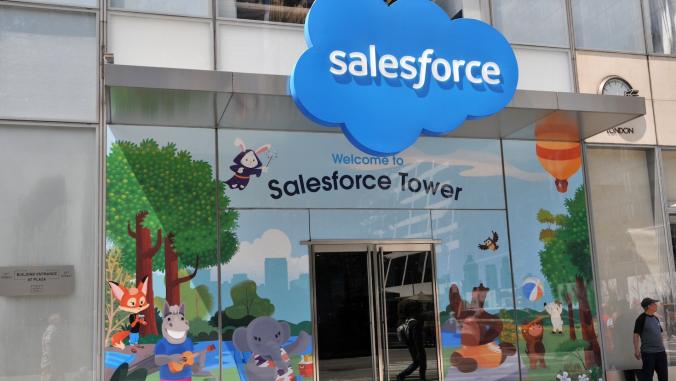5 lessons from the field of technology and conservation
What does it take to be "wired in the wild?" Tech from Autodesk, Esri, Google, IBM and Microsoft makes the link between conservation and science.

What do you get when data scientists, imagery experts and sensor advocates mingle with conservation specialists? A gathering that looks a lot like this year’s World Wildlife Fund Fuller Symposium, appropriately themed "Wired in the Wild."
The "big" question addressed by this year’s speakers: "Can technology save the planet?" The qualified answer: it will play an essential and increasingly inevitable role, with the right human intervention. "Environmental science depends on software and data," noted Victoria Espinel, president and CEO of tech trade group BSA, the Software Alliance, in her keynote remarks.
That innovation comes in many shapes — from satellite imagery that helps detect illegal logging to the Internet of "living things" that is being used to catalog bird, mammal and fish migratory patterns. "Imagery is great as a tool to show people things they would not otherwise be able to see," said John Amos, president of SkyTruth, an organization that has used satellites to track everything from oil spills to mountaintop strip mining.
Environmental science depends on software and data.
As a moderator for this year’s symposium, I was granted a front-row view into some of these compelling experiments. Here are some of my takeaways from this extraordinary conference, which took place in November at the National Geographic headquarters in Washington, D.C.
1. Collaboration is crucial
Certainly, the goal of an individual wildlife or habitat research project is very local in nature. Literally. Still, scientists could benefit from sharing best practices about how to use specific technologies — a theme that emerged time and again during the Fuller Symposium presentations.
Sharing is the mission behind a new online community, Wildlabs.net, launched in mid-November by an alliance of influential conservation organizations with the support of Google and chip designer ARM — and trumpeted loudly during the conference.
"By bringing together experts from multiple sectors, we can create solutions to challenges that have proven impossible to solve in isolation," said Ian Ferguson, vice president of worldwide marketing and strategic alliances for ARM. "Whether that is by enabling communities to apply new tools in protecting their natural resources, transforming our understanding of wildlife and natural systems through tracking and listening technologies, or supporting the detection and prevention of poaching in protected areas, technology can be a powerful tool for the conservation cause."
The organizations participating in Wildlabs are Conservation International, Fauna & Flora International, International Union for Conservation of Nature, Nature Conservancy, Wildlife Conservation Society, WWF, Zoological Society of London and the Royal Foundation.
2. Community participation matters
Many of the most successful projects discussed during this year’s Fuller Symposium shared this trait: the organizing researchers worked closely with members of the local community to encourage participation.
One example comes from Uganda, where wildlife veterinarian and game warden Margaret Driciru counts on local rangers to submit data about injured or dead animals they find throughout the countries parks and preserves. The intention is to minimize human and wildlife conflicts. By asking rangers to watch for signs, Driciru was able to educate a broader part of the community about the issue.
Google Labs product lead Katharine Chou offers another illustration, from her work with the Lewa Wildlife Conservancy in northern Kenya. The organization uses tracking technology and Google’s StreetView mapping software to follow the migratory routes of several endangered species, including elephants. The data uncovered by this initiative inspired the creation of a "throughway" that opens up the animals’ traditional migratory route, while allowing humans to traverse the habitat. "We’re helping reroute animals before there is a conflict," Chou said.
3. Keep an open mind
Any researcher using technology — anything from sensors and wireless communications to specimen-collection equipment — should expect many humbling false starts.
Consider the story of National Geographic David Gruber, a pioneer in deep ocean exploration. Gruber recalls his early expeditions in an "exosuit," a $600,000 metal suit that looks much like what astronauts use for space exploration.
While Gruber expected the 530-pound suit to make sample collection at depths of up to 1,000 feet simpler, his preference now is for a small bubble-like submarine, which makes it easier for divers to see much more of the ocean’s floor. "My whole view on what the deep sea is like changed in a minute," he said.
Gruber’s early missions also revealed a shortcoming in the design of the collection arms: The traditional claws were tough on delicate specimens. Now the team is experimenting with a design that mimics an octopus tentacle, strong yet gentle. Far more appropriate for gathering objects from the ocean floor.
4. Consider the ethics of collecting data carefully
Time and again, the Fuller Symposium speakers pointed up the need for more education about how much conservation data should be shared publicly — and what should be secured to protect vulnerable animals. Key goals should be accurate and accessible information, collected in the most non-intrusive way possible.
"We need to responsibly unleash data in an appropriate way," said D.J. Patil, America’s chief data scientist and head of the White House Office of Science and Technology Policy.
Contrary to what many people believe, Microsoft Research scientist Lucas Joppa suggests the conservation community suffers from a lack of information — many databases aren’t being kept up to date with real-time information, he noted.
On the other hand, social networks such as Facebook reach almost 20 percent of the world’s connected population. More attention must be paid to bridging this divide. "How do we use the information age to counter the impact of the anthropecene?" Joppa asked the Fuller Symposium attendees rhetorically.
5. Don’t underestimate the role of the private sector
A who’s-who list of software companies — ranging from Autodesk to Google to IBM to Microsoft — is contributing intellectual property to conservation projects, several of which were mentioned during symposium presentations. Autodesk’s software, for example, is being used to capture and create highly detailed 3-D images of how coral reefs off the Hawaii island of Molokai are changing over time.
Google’s outreach is well-documented: close to 200 WWF projects are visualized through the Google Earth’s mapping service. This is allowing scientists, students and citizens unprecedented access to information about habitats, and endangered and invasive species.
Environmental scientist Jack Dangermond is driving a similar crusade in "spatial literacy" with his company Environmental Systems Research Institute (Esri). Schools are a major focus.
"If you look at the future of the world, it doesn't look so good," Dangermond told GreenBiz in November 2014. "Kids are not understanding all the patterns and relationships of climate change or urbanization or population growth. This is a way to get them to understand those parameters, in a do-it-yourself, learn by doing, project-based learning environment. Teachers love this. The kids go crazy, when you see them, if they have a good teacher."
For his part, Patil underscores the role of private sector involvement in advancing conservation that the public sector can’t afford to fund on its own. "People are combining data in very innovative ways," he said during the symposium. "It’s not a debate, it’s tangible."





